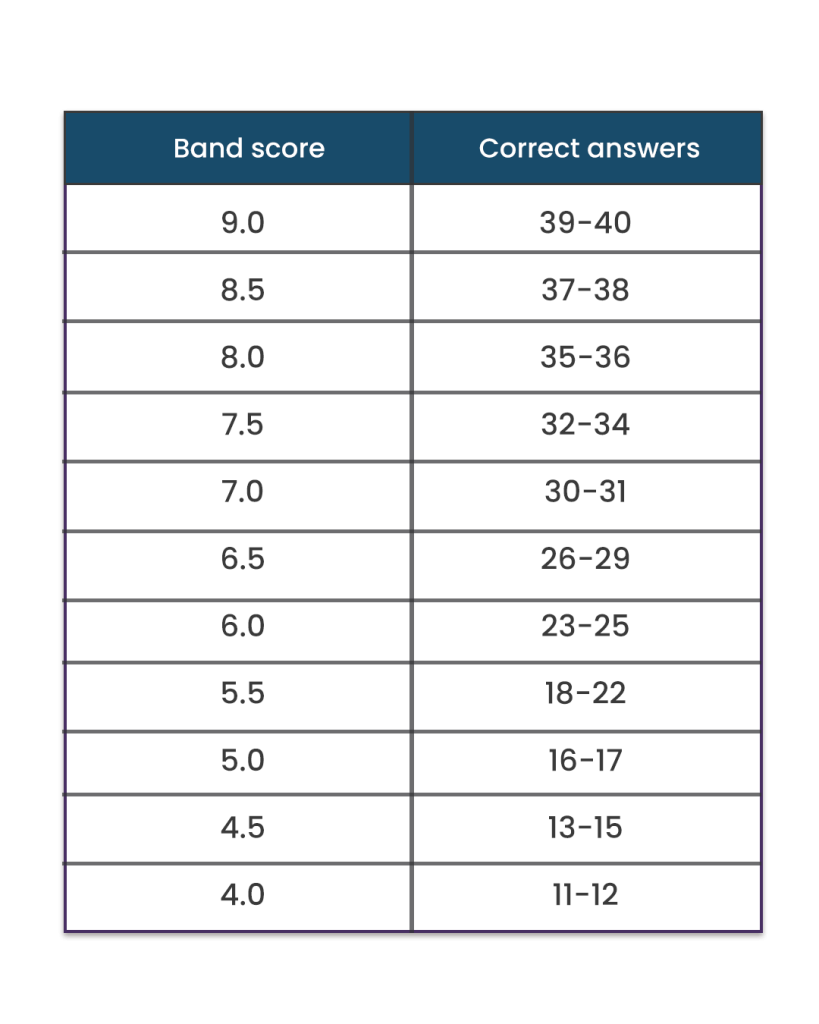
IELTS Listening Master Program: In an IELTS Listening test, you would have to listen to a few audio recordings played by the examiner and answer the questions given below. These audio recordings will be in the form of monologues or conversations between two or more people.
IELTS Listening Practice Test: Here you can practice IELTS Listening, find IELTS listening audios, question samples, and answers.
Note: IELTS Material Master Program – IELTS Listening is the same for Academic and General. So these practice tests hold good for IELTS Academic and General aspirants.
The first two parts of the test are about social requirements.
The latter two parts deal with situations that are more closely tied to educational or training settings.
All of the IELTS listening themes are of broad interest, regardless of what subjects you aim to study or what type of work you plan to pursue.
The recordings feature a variety of English accents and dialects, reflecting IELTS usage around the world.
The classification of the listening module of the IELTS test is given below;


Now that you know how many marks you require as per the band desirability. The following is the IELTS exam question list, and you may encounter some of them in your actual IELTS test. Jot down the ones you find easiest to score as per your overall IELTS band requirement.
Although there are only four parts to the listening test, the types of questions differ for every exam. The students may encounter some of the following mentioned questions in their real IELTS test.
The students get questions like Note Completion or Form completion in the first part of the IELTS listening test. These questions are nothing but fill-ups. You will have missing gaps in a statement to fill up with usually exact words of the speaker from the audio. The difficulty level is the easiest compared to other parts of the test because of the order of difficulty criteria. The students must try their best to get all 10 questions of section 1 correct to grab easy bands with no effort.
The students might also get a conversation where the speaker corrects himself. For example, ‘It’s Loren gram, no Loren gran spelt with N.’ Do not take this negatively as it is distracting but instead take it positively that the speaker is helping you write the correct answer.
The best example of Form Completion is a quotation form of a company.
Besides form completion, note completion is also attributed to fill-ups, and in this task, there will be notes. The speaker will systematically give a piece of information. Moreover, if the speaker summarises the information on a topic stepwise, it is Summary Completion.
SAMPLE LISTENING- NOTE COMPLETION PRACTICE TEST 1
Instructions on How to Give This Practice Test:
1. Take a pencil and a copy.
2. Click on the audio link below.
3. While listening to the audio, answer questions 1-7 followed by the audio file.
(Reminder: In the real exam, you will write answers directly on the question paper and will get an extra 10 minutes to transfer answers to the answer sheet once the listening part is done.)
AUDIO –
Questions 1-7:
Complete the sentences below.
Write No More Than Two Words for each answer.
The Yavari: The Incredible Ship
Today
Where you can see the ship now: close to a 1. ………. At Puno Bay in Peru.
What visitors can do:
• Take a 2. ……….
• Sleep on the ship
History
Year when the ship was built: 3. ……….
Main material used in building the ship: 4. ……….
How it was transported to Peru by sea in small sections
How it was transported across Peru:
• By 5. ……….
• On horseback
Working Life
Raw material carried by the ship:
• Precious metals
• 6. ……….
The type of engine first fitted on the ship: 7. ……….
Answers: 1. (big) hotel 2. guided tour 3. 1862 4. iron 5. train 6. wool 7. steam (engine) Note: Words in brackets are optional – they are correct, but not necessary
Sentence Completion in the IELTS Listening part will provide you with a sentence to complete based on the audio you hear. The blanks might exist anywhere in the statement, but they are most commonly framed near the conclusion. Identifying what queries you are aiming for is by far the most crucial aspect. Moreover, practice more Sentence Completion question tasks of the IELTS Listening module and learn tips and tricks to crack them easily.
Commonly seen in the first section of the listening module, the examiner places a lot of distractors in this question task.
SAMPLE LISTENING- SENTENCE COMPLETION PRACTICE TEST 1
AUDIO-
Instructions on How to Give This Practice Test:
1. Take a pencil and a copy.
2. Click on the audio link below.
3. While listening to the audio, answer questions 21-25 followed by the audio file.
(Reminder: In the real exam, you will write answers directly on the question paper and will get an extra 10 minutes to transfer answers to the answer sheet once the listening part is done.)
Questions 21-25:
Complete the sentences below.
Write NO MORE THAN THREE WORDS AND/OR A NUMBER for each answer.
21. Ministers and officials put the ………. of the agriculture business first.
22. Hormones make cattle ………., thus making meat production more profitable.
23. The use of hormones was banned over ………. ago in Europe.
24. The USA and Canada asked the WTO to declare the ban ………. .
25. A Danish study that hormones are over ………. more dangerous than was previously thought.
ANSWERS- Answers 21-25: 21. profits 22. grow faster 23. 20/ twenty years 24. illegal 25. 200
SAMPLE LISTENING- TABLE COMPLETION PRACTICE TEST 1
AUDIO –
Questions 11-17:
Complete the table below.
Write NO MORE THAN TWO WORDS AND/ OR A NUMBER for each answer.
CFCs (chlorofluorocarbons) and the Ozone Layer
| 11. ………. | Electron Capture Detector invented by James Lovelock |
| 1973 | Lovelock one self-funded 12. ………. to Arctic/ Antarctic Lovelock’s conclusion: CFCs 13. ………. |
| 1974 | Rowland and Molina publish world’s first 14. ………. on connection |
| 1975 | State of Oregon introduces world’s first ban of CFCs |
| 1978 | CFCs in 15. ………. banned in US and some parts of Europe |
| 16. ………. | Hole in ozone layer above Antarctica first detected |
| 1987 | Signing of Montreal Protocol |
| 1989 | EU ban production of all CFCs by end of 17. ………. |
Answers –
Answers 11-17: 11. 1957 12. research trip 13. not harmful 14. scientific paper 15. spray cans/ spray – cans 16. mid 1980s/ mid – 1980s 17. (the) century
Yet another critical task of the IELTS Listening module is Flow chart completion. This task depicts the steps of a process. There will be a beginning and a finish to the procedure, with various steps in between.
A flow chart in IELTS Listening may include almost anything that can be broken down into stages, such as a lecture or essay outline, an application procedure, training course stages, or an explanation of the manufacturing process.
Having moderate difficulty, this question task usually appears in section 2.
SAMPLE LISTENING- FLOW CHART PRACTICE TEST 1
Audio –IELTS Listening – Flow Chart Completion – IELTS SUPPORT
Questions 1-5:
Complete the flow-chart below.
Write No More Than Two Words for each answer.
Five Stages in the Process of Designing a Building
Answers
Answers 1-5: 1. client’s/ clients’ needs 2. materials 3. plans 4. contractors 5. clarifying
The examiner can frame two types of Multiple Choice Questions. One is to choose one correct answer and another to choose multiple answers. IELTS Listening Multiple Choice Questions are difficult and therefore usually appear in section 3 or 4 of the test. The task is difficult because there are long sentences to read and choose a correct response in very little time. In addition to that, sometimes, if any question candidate misses out while hearing the audio, it is very likely to miss all questions and lose 5 or more marks.
Further, if the examiner asks to choose multiple answers with lengthy statements, it becomes harder to answer and gain bands.
SAMPLE LISTENING- MULTIPLE CHOICE QUESTIONS PRACTICE TEST 1
AUDIO –
(Reminder: In the real exam, you will write answers directly on the question paper and will get an extra 10 minutes to transfer answers to the answer sheet once the listening part is done.)
Questions 1-6:
Circle the correct letters A-C.
1. Emiliano is hoping to rent a house for
A. 8 months
B. 6 months
C. 7 months
D. 12 months
2. As proof of identity, Emiliano gives his
A. passport and student card
B. passport and bank card
C. student card and bank card
D. student card and driving licence
3. Emiliano can be contacted
A. on his mobile
B. by leaving a message at his homestay
C. by telephoning his school
D. by e-mail
4. Emiliano is looking for a house which is less than
A. half an hour away by bus
B. one hour away by bus
C. one hour away by bus or train
D. half an hour away by bus or train
5. He can find the weekly cost of the house by
A. asking the estate agent
B. looking at the house list
C. looking at the sign outside the house
D. asking the owner of the house
6. When he moves out, Emiliano will get back
A. his deposit and agent fee
B. the equivalent of one week’s rent
C. his deposit
D. the equivalent of one week’s rent and his deposit
Answers 1-6: 1. B 2. A 3. A 4. D 5. B 6. C
The last task of the listening module is map labelling or diagram labelling. Students might get puzzled by the recording and, therefore, may lose bands in this task. For example, the speaker explains some routes to various areas or floors in a college hall. Another example most commonly appears in the IELTS exam is of routing places of a complex such as restaurants, clubs, libraries, and likewise.
Diagram labelling, on the contrary, lets students label any picture based on the audio recording. For instance, two speakers discuss a bicycle and define various elements of it, such as tyres made of a particular material, and the students will have a similar option to label with tyres.
SAMPLE LISTENING- MAP QUESTIONS PRACTICE TEST 1
AUDIO –
(Reminder: In the real exam, you will write answers directly on the question paper and will get extra 10 minutes to transfer answers to the answer sheet once the listening part is done.)
Questions 11-15:
Label the map/ plan below.
Choose FIVE answers from the box and write the correct letters A-I next to the questions 11-15.
ANSWERS
Answers 11-15: 11. H 12. G 13. D 14. B 15. F
Both of these tasks of IELTS Listening are easy if students pursue good listening skills.
In conclusion, the Listening module of the IELTS exam is easy. The students can get 8+ or perfect band nine if they understand how to respond to them smartly.
[carousel_slide id=’16536′]